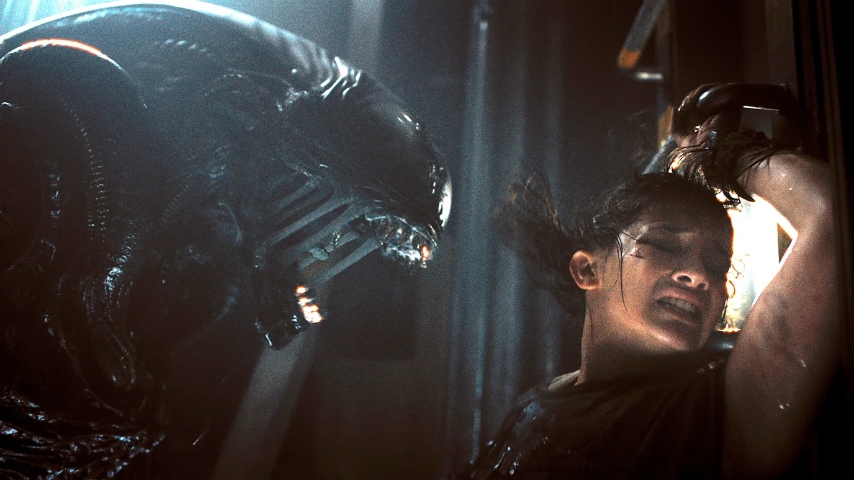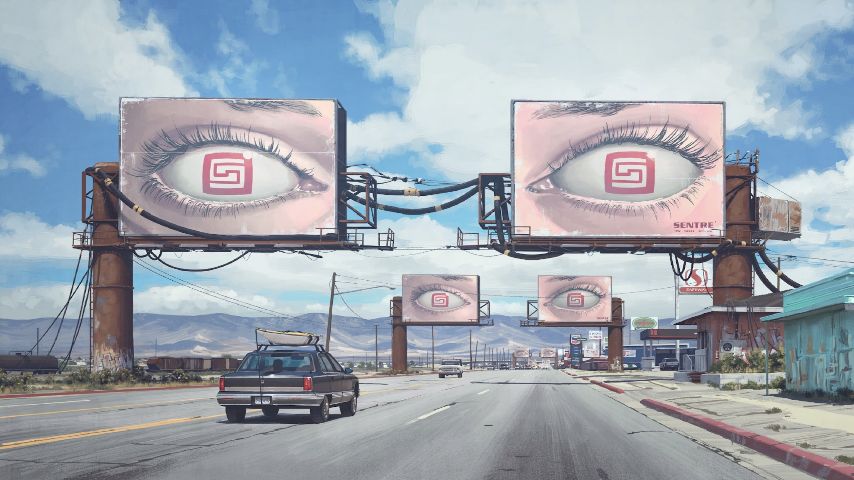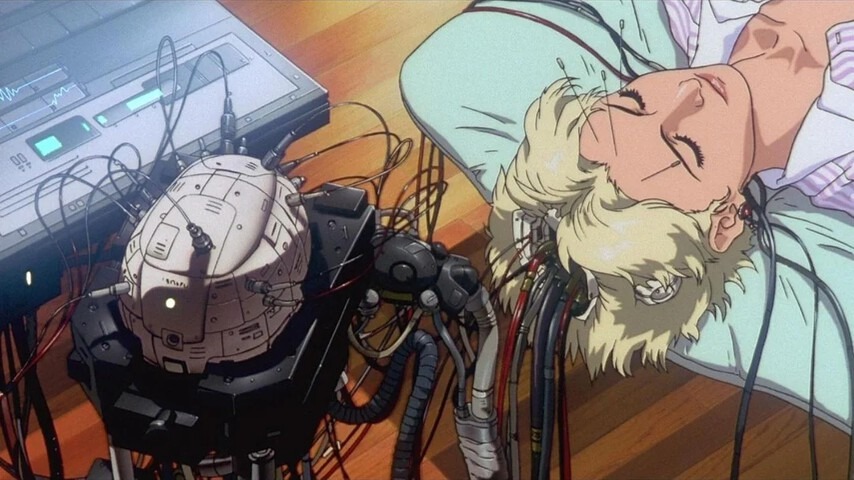Alien Romulus has notably utilized AI and CGI technology, specifically deepfake techniques, to resurrect veteran actor Ian Holm from the series. This decision has sparked mixed reviews and prompted director Fede Alvarez to publicly explain the necessity of this choice amidst the ongoing AI controversy.

A scene from Alien: Romulus pays homage to a classic moment from David Fincher’s Alien 3 (pictured below). (Source: Disney)

(Spoiler alert: It is recommended to watch Alien: Romulus before continuing with this article.)
Alien: Romulus has won over fans partly by successfully paying tribute to many classic moments from the series, including the protagonist Rain, who reminds viewers of Ripley, the original heroine of the series. The film features familiar elements like the artificial intelligence "Mother" (MU-TH-UR) interface, callbacks to the prequel Prometheus with its black goo, and the abandoned industrial-style spacecraft.
However, one Easter egg has drawn some criticism: Ian Holm, who originally played the android science officer Ash in the first film, appears as another android, Rook, in this installment. This has sparked debate since Holm passed away in 2020, and Alien: Romulus uses AI and CGI technology to digitally resurrect this familiar Alien character, raising questions about digital ethics.
Given last year's Hollywood actors' guild strike, which was partly triggered by concerns over AI replacing human actors and fears of artistic theft, Holm's resurrection has come under scrutiny. This recalls the 2016 Disney production, Rogue One: A Star Wars Story, which digitally recreated Carrie Fisher's Princess Leia—though Fisher had consented to this, unlike Holm's situation.
For instance, IGN criticized the cameo as "Alien: Romulus' Surprise Cameo Is Ugly and Unnecessary." Meanwhile, the film review site SlashFilm commented, "The simple truth here is that not only does this look bad, it's a bad idea all around," noting that it repeated the mistakes of Rogue One. Some Reddit users also felt that Holm's appearance "looked bad and dragged down the atmosphere of the film," being "below the overall quality of the movie."
Holm's Digital Resurrection Came at a High Cost
In a Los Angeles Times interview, the director defended their choice. First, he and producer Ridley Scott had obtained consent from Holm's family, noting that Holm felt "forgotten by Hollywood" since his last major role in The Hobbit series (Holm was also known for his roles in The Lord of the Rings and The Fifth Element, making him a sci-fi staple). His widow expressed that she believed Holm would have been supportive of this decision.
Moreover, while they did digitally resurrect an actor, eighty percent of the role was achieved using animatronic effects, requiring puppeteers and another actor for facial capture—thus employing more "human" effort. AI and CGI were mainly used in post-production to enhance eye and lip movements and to recreate Holm's voice. The director emphasized that their approach was more expensive, not a shortcut, and that Rook, unlike Ash from the first film, was a different character. Reviving Holm was a tribute to his legacy in the Alien series, and the director does not believe AI will replace human actors in the future.
 Ian Holm, known for his role as Ash in Alien, is a familiar face to many fans of the series. (Source: Wiki)
Ian Holm, known for his role as Ash in Alien, is a familiar face to many fans of the series. (Source: Wiki)
The Cinematic Significance of the Android Ash
The case of Alien: Romulus differs from previously discussed uses of AI, such as "Impure Resurrection Jutsu," which were aimed at cutting costs or disregarding the wishes of the deceased's family. In the film, Rook, as a damaged android, somewhat naturally exhibits the uncanny valley effect of being non-human yet impaired.
Returning to the context of the film, having Holm appear was indeed meaningful. According to director Alvarez, when he learned that animatronic puppet technology was an option, he wanted to bring back an android from the series, eventually deciding on Holm's Ash.
Ash's role in the first Alien film was not only a major twist but also continued the tradition of rebellious artificial intelligence from 2001: A Space Odyssey and set the stage for the Alien series' tradition of featuring a morally ambiguous android, including Bishop in the second and third films, Annalee played by Winona Ryder in the fourth, and the mercurial David in the prequels. Moreover, Roy from Blade Runner, thanks to Ridley Scott's shared universe concept, also falls within this lineage initiated by Ash.
 Rutger Hauer, known for his iconic "Tears in Rain" monologue as Roy in Blade Runner, interestingly once voiced Ash in the audio drama Alien: Out of the Shadows, linking him to the same universe. Hauer passed away in 2019, and there's speculation that we might see a digital resurrection of him in the future.(Source: Warner Bros)
Rutger Hauer, known for his iconic "Tears in Rain" monologue as Roy in Blade Runner, interestingly once voiced Ash in the audio drama Alien: Out of the Shadows, linking him to the same universe. Hauer passed away in 2019, and there's speculation that we might see a digital resurrection of him in the future.(Source: Warner Bros)
Looking at the case of Alien: Romulus, the application of AI or deepfake technology ultimately needs to be discussed on a case-by-case basis. Coincidentally, the American actors' guild recently reached an agreement with the online voice content platform Narrativ, which allows actors to give consent for the use of their voices with AI technology. This agreement highlights that reducing exploitation of existing works or individuals is key to gaining public acceptance. For those who have seen Alien: Romulus, did you recognize this familiar face? Were you surprised or shocked?



 Ian Holm, known for his role as Ash in Alien, is a familiar face to many fans of the series. (Source: Wiki)
Ian Holm, known for his role as Ash in Alien, is a familiar face to many fans of the series. (Source: Wiki) Rutger Hauer, known for his iconic "Tears in Rain" monologue as Roy in Blade Runner, interestingly once voiced Ash in the audio drama Alien: Out of the Shadows, linking him to the same universe. Hauer passed away in 2019, and there's speculation that we might see a digital resurrection of him in the future.(Source: Warner Bros)
Rutger Hauer, known for his iconic "Tears in Rain" monologue as Roy in Blade Runner, interestingly once voiced Ash in the audio drama Alien: Out of the Shadows, linking him to the same universe. Hauer passed away in 2019, and there's speculation that we might see a digital resurrection of him in the future.(Source: Warner Bros)

